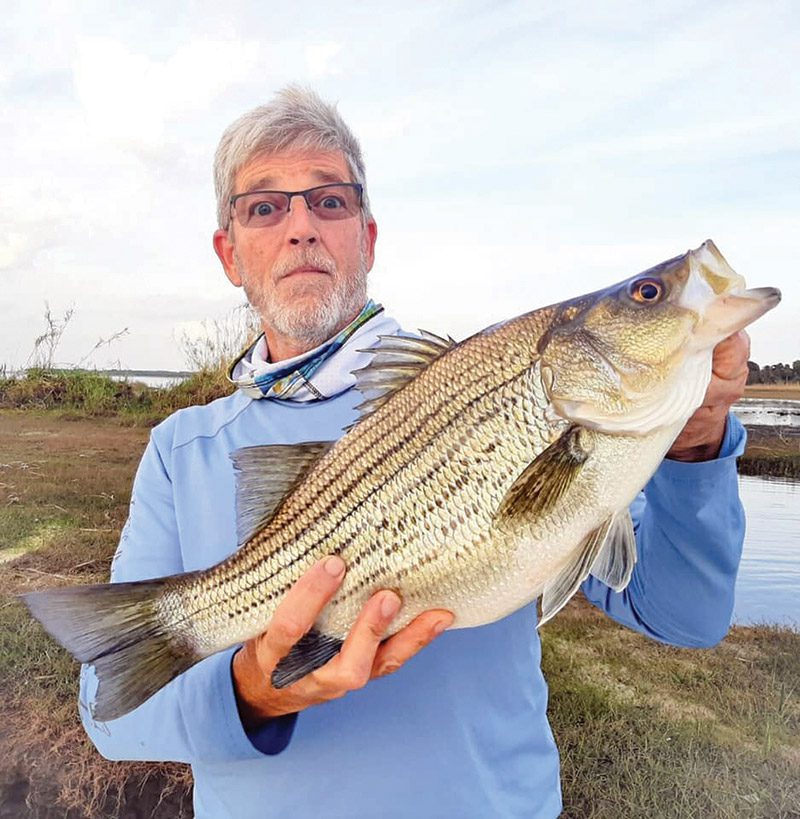
Look for schools of live bait getting crushed by sunshine bass and schooling largemouth bass at the mouths of the lakes and in the deep river bends at first light or late evening. Topwater is the name of the game! Nothing beats that explosive topwater strike—these hungry fish will destroy a Heddon Spook Jr. in bone color, or you can also try your favorite saltwater topwater baits if they are small sized. Second best are rattling crank baits—Rattle Traps and their look-alikes (no rattle works great too). If the bass are finicky, tie on a white jerkbait; first try unweighted and use a walk the dog style retrieve just beneath the surface to get you some fish. Carolina rigged lizzards working a bass on the bed. Lizzards eat eggs, which momma bass cannot tolerate.
March means trophy bass in the St Johns River. Large wild shiners are the best bait if you can find some. For giant largemouth, remember these female fish are the breeders for the future; lift them out of the water supporting their belly and hold them out of the water only as long as you can hold your breath. Avoid holding vertically by the lower jaw. Take measurements of length and girth, take pictures to save and share the memory. Fish measuring boards are the way to go for photo proof. Why ride around with a giant in your baitwell? Practicing catch and release for trophy bass is honorable!
Panfish will readily eat minnows. They love red worms, night crawlers, and crickets. Look for bedding areas in shallow waters. Bluegill and shellcrackers will take over beds used earlier by bass and crappie. Look in those same areas and concentrate efforts where there is a shell bottom near drop-offs and nearby cover (lily pads). Crappie will be found in the pads during full and new moons. At other times, try longline trolling or spider rigging the drop-offs along the river.
CHARLIE McCULLOUGH
Coastal Angler Magazine
charlie@coastalanglermagazine.com
